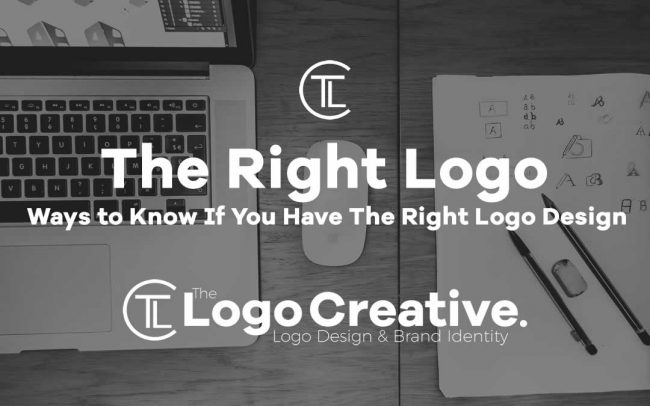In this post, we will be taking a look at Ways to Know If You Have The Right Logo Design
What makes a brand succeed and others fail? Obviously, it’s the quality of the product and service being offered to the target market, the overall customer service and availability are very important factors in any brands success. Let’s say all the above factors are equal, what is it that sets that business apart from the masses of competition?
An effective logo and brand mark can sometimes make the difference between a brand’s great success or their disappointing failure. Just consider some of the world’s biggest and long-lasting brands. They employ logos that are distinctive and eye-catching, but also meaningful and memorable a true iconic visual identity.
“A logo is a brand visual identifier such as a mark, signature, emblem, sign. The logo does not sell to customers directly, it identifies,” world-renowned designer Paul Rand wrote. “A logo is rarely a description of a business. A logo derives meaning from the quality of the thing it symbolizes, not the other way around.”
So you didn’t like the logo the freelance designer you hired created for you? Or you do like but you just aren’t sure whether you should stick to it forever?
Well, forever is a long time especially if you’re building a company that you want to last that long. Before you approve or disapprove the logo created, So how do you know when your logo design is the right one? Take a moment and ask yourself if it reflects the qualities described in the below logo design tips, summarised in this infographic.
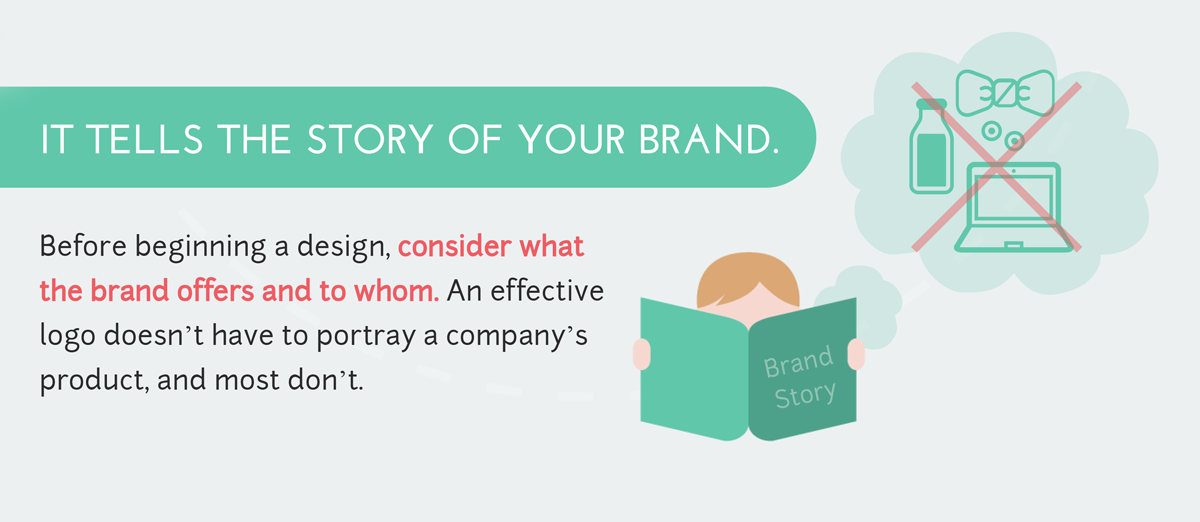
Table of Contents
It Tells The Story Of Your Brand
Before starting a design, consider what the brand offers and to whom (its target market or audience). An effective logo design doesn’t have to portray a company’s product or services, and most don’t.
When designing a logo, ask yourself what meaning or message it should communicate.
A logo is more than just an image. It’s the public face of a brand and its unique visual identifier. Before starting the design process, it’s important to consider what the brand offers and who is the target market. Should it be represented by a particular emotion or specific utility?
Remember an effective logo doesn’t have to portray what the business does or sells, and most top brands don’t. Nowhere in McDonald’s famous golden arches is there a hamburger. Apple doesn’t sell fruit, and Nike doesn’t sell “swooshes.” But each represents the brand through a combination of shape, colour and symbolism.
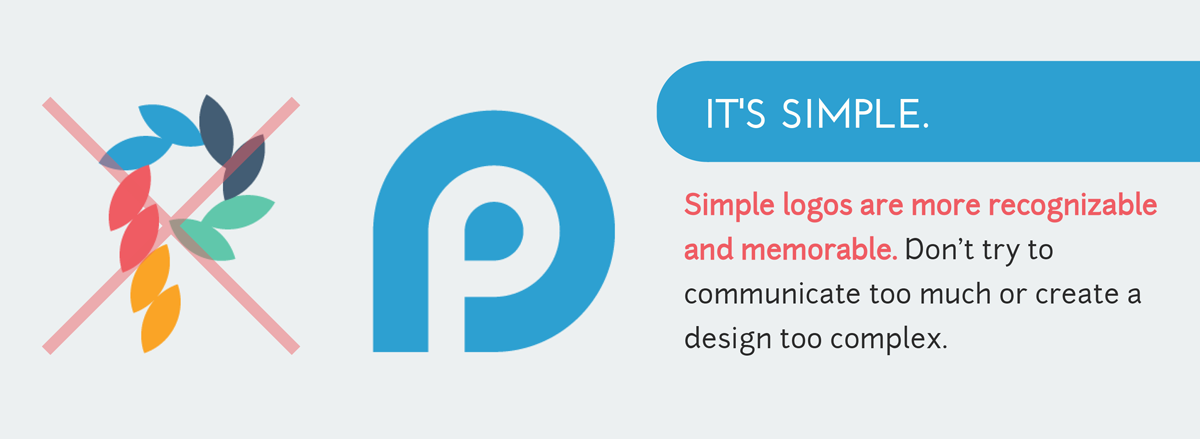
It’s Simple
Simple logos are more recognisable and memorable. Don’t try to communicate too much or create a design too complex.
When it comes to effectively conveying a brand’s key message, simplicity in logos is by far more recognisable and memorable. Alot of the time Logo designers try to communicate a little too much, creating a design too complex for audiences to decipher.
Consider a large notice board also known as a billboard that audiences might drive past at high speeds down a dual carriageway or a magazine ad that can be seen and comunicated quickly while flipping through the pages. A complicated design will be nothing but a barely-noticeable blur. Lots of today’s most famous logos consist of one maybe two simplistic shapes.
Just think of Nike’s famous “swoosh,” or Apple’s bitten apple. The basic shapes are immediately associated with the brands they represent. Would a complex logo design featuring running shoes or computers be just as recognisable? The designers or founders of these companies had a vision they thought differently, they broke the rules in design and it worked.
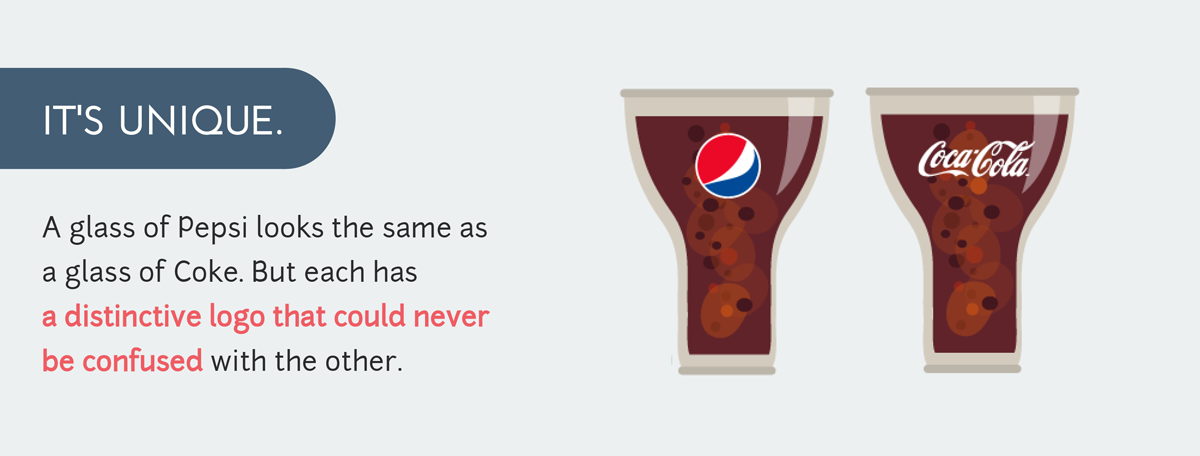
It’s Unique
A glass of Pepsi looks the same as a glass of Coke. But each has a distinctive identity that could never be confused with the other one.
Brands are often distinguished from their competitors by their logos. A glass of Pepsi looks pretty much the same as a glass of Coke. Some people can’t tell them apart by their taste (I know I can i prefer Coke but that’s just me!). But again the distinctive mark can never be confused.
When designing a logo with the aim of standing out from the competition, it’s important to think outside the box. Neither Coke nor Pepsi features the actual beverage in their logos. If every airline used an airplane in their logo designs, would anyone recognise one from the next?
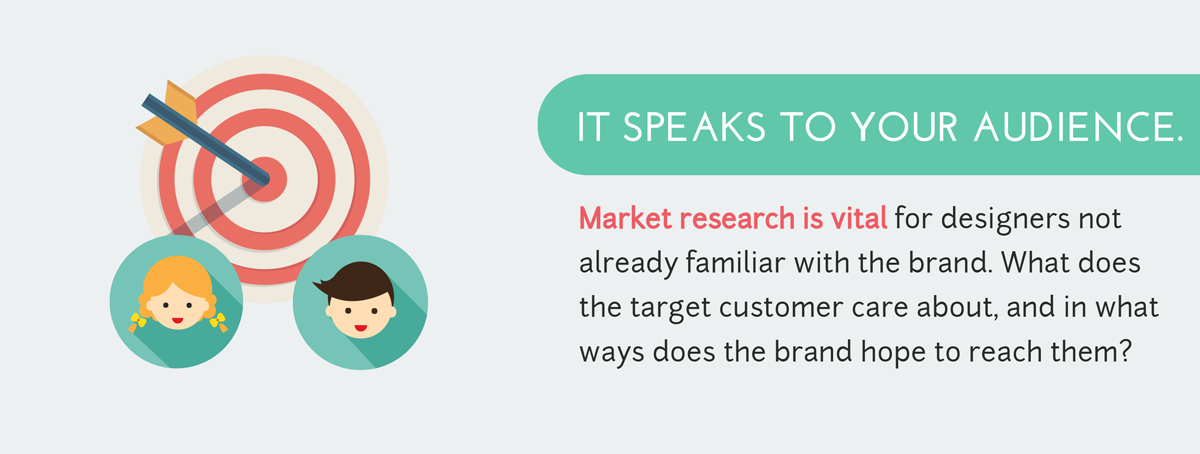
It Speaks To Your Audience
Market research is a key factor for designers not already familiar with that brand. What does the target customer care for most, and in what ways does that brand try to communicate this to them?
When designing an identity for a brand, it’s more important to consider what message will speak to the target audience, rather than your personal tastes as a designer. A conservative designer may prefer muted colors and block letters, but if the brand targets a young, urban audience, bright colours and vivid fonts will be more appropriate.

It Is Timeless
Design trends come and go, but an effective logo will stand the test of time.
While the best designers keep ahead of the latest crazes in Logo Design, they also realise the importance of as the saying goes jumping on the bandwagon and following that movement. After all, you don’t want your brand to be a passing trend.
Will your logo convey the same message to its target market in 10 years or 20 years or even 50 years time? And will it still stand apart from the competition? If you find yourself borrowing heavily from the latest design trends, the answer is more than likely no.
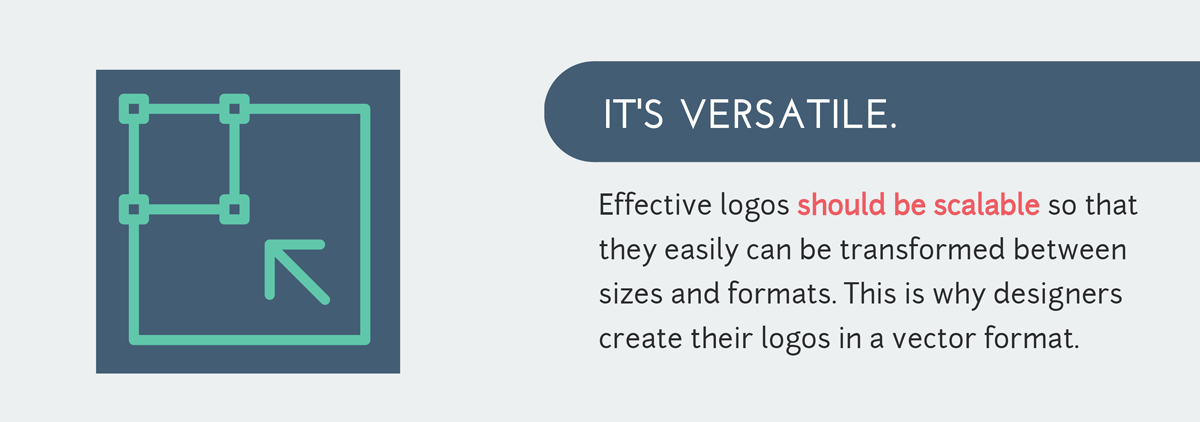
It’s Versatile
Effective logos should be scalable so they can easily be transformed between sizes and formats. This is why logo designers should be creating logos in a vector format. and I’m sure you will agree that there are a lot of designers out there that don’t. So always check this but any good experienced designer knows this. But a client looking to hire a logo designer may not be aware of this.
If a logo is to universally represent a brand, it must be compatible with a variety of media. Effective logos don’t simply look good on a package design or a shop front. The same design must also be recognisable online, in print advertisements, on road signs, and on a video. While many logos are designed in full color, they should also be compatible with a black-and-white printing process. We as a design studio are very high on this and work in black and white, colour comes later.
Designers should think big when designing logos. Just because the design represents a small-scale brand now doesn’t mean that the company will not grow in months or years down the line. Effective logos should be scalable so that they easily can be transformed between sizes and formats. Many designers accomplish this by designing their logos in a vector format.

It Employs Appropriate & Effective Typeface
When choosing a logo’s typeface, Its good practice to use no more than two fonts in a Logo design this helps make it versatile, distinctive and easy to read.
Unless you’ve designed a clever, original, and inventive. vector with a one-of-a-kind and instantly-recognisable shape, your logo needs some sort of typography to describe your brand. It’s also important to differentiate between logotype and the tagline also known as a slogan, which is the text displayed under the design that describes a company’s mission. Showing too many words in a tagline require smaller text that can be illegible in many sizes.
Instead, the most effective logos employ typography, whether it’s the business name, initials or some other descriptor. While popular logo designs often feature a custom typeface, designers can also choose a pre-set font, provided it’s simple and classic.Helvetica is one of the most commonly-used fonts in logo designs, as seen in popular brands such as Target, JC Penny, and Crate & Barrel.
Helvetica is one of the most commonly-used fonts in logo design, as seen in popular brands such as Microsoft, British Gas, Nestle, Target, Jeep, Toyota, Panasonic, The North Face, The list goes on!.
Some logos are completely Typography-based known as word marks, such as Coca-Cola’s universally-recognised script. The style is popular among big companies because of its simplicity and ease of reproduction, but it can also be difficult to achieve originality. Designers often tweak an existing font if they aren’t comfortable with creating their own typeface.
Our good friend and fellow logo design blogger Jacob Cass who was our first ever designer to be interviewed on our site told Mashable.
“If your company has a unique name, then you could get away with a logotype. But if you have a generic name, then you’re going to need something to identify the brand by, which can be achieved by using a logo mark,”
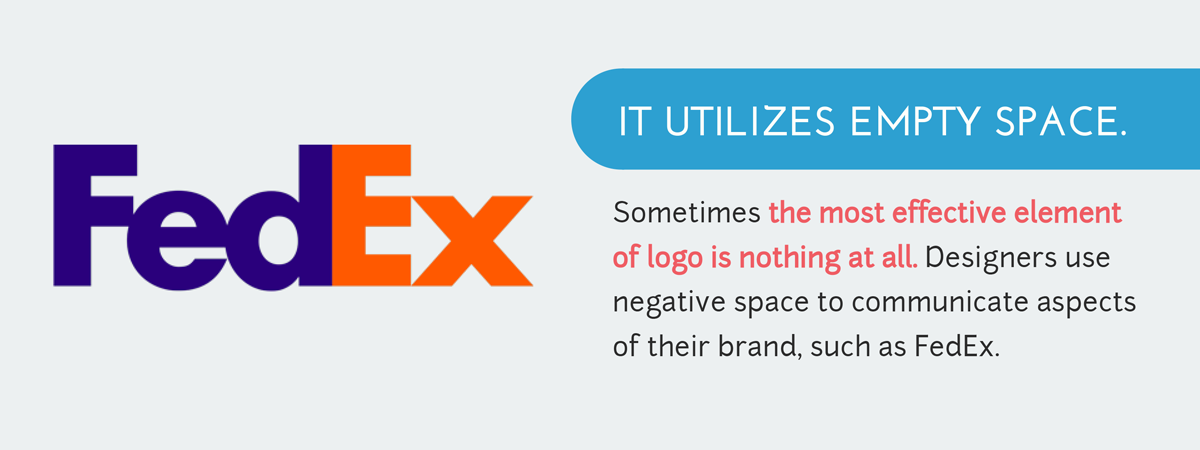
It Utilises Empty Space
Sometimes the most effective element of a logo is nothing at all. Designers use negative space to communicate aspects of their brand, such as FedEx.
The logo is made up solely of the company’s name but positioned in a way that the empty space subtly creates a hidden arrow. This is the negative space between the “E” and ->”X” as you can see in the image above.
Even if the space left in a logo isn’t sending a subliminal message, it’s still an important element of the design. Effective logos usually include an exclusion zone, the area surrounding the logo that isn’t filled with another element. Without the empty space, the logo could blend into whatever background in which it appears.
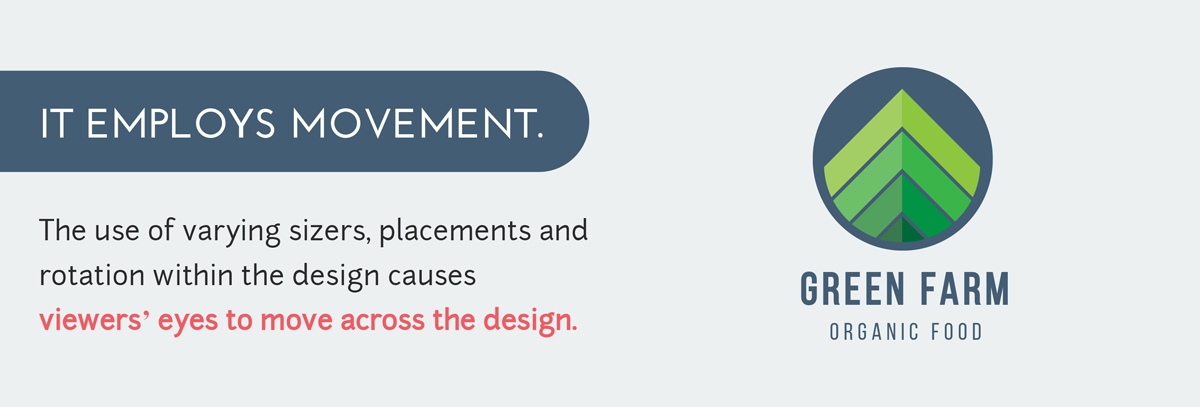
It Employs Movement
The use of varying sizes, placements and rotation within the design causes viewers eyes to move across the Logo design.
Movement is an important element in any design, including logos. In the case of illustrations, however, the movement has nothing to do with animation or video. Instead, the use of varying sizes, placements and rotation within the design causes viewers’ eyes to move across the design.
One of the simplest ways to create movement, obviously, is through the use of arrows and other angles, or even lines. But clever designers know better than to rely on such cliches. a simple slanting of the text can create movement, as can the positioning of images. Twitter created movement in its logo by slanting the bird towards the sky, as if it was about to fly.
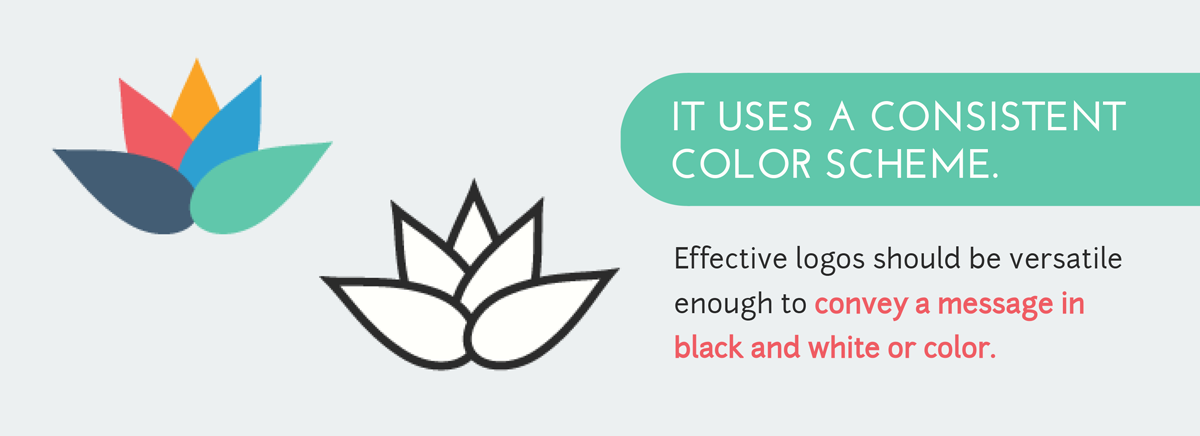
It Uses a Consistent Colour Scheme
Effective logos should be versatile enough to convey a message in black and white or colour, but should not rely on colour alone.
Therefore, if the design conveys its message through the use of color, try altering the contrast of various elements to retain the same meaning if presented in monotones.
While it’s important to consider the design’s impact in grayscale, color is a great way to express a brand’s personality or to target specific emotions within a target audience. In fact, entire books have been written on the science and psychology of colors. For example:
- Red is used to express energy, sexiness, and affection.
- Green can convey growth, instruction, institution, and life.
- Yellow is often used to express cheerfulness and optimism.
- Blue exudes professionalism, tranquility and trust.
- Brown is used to representing history, consistency, and earthiness.
Still, even if multiple colors are chosen, it’s important to stick with a scheme that is consistent with color theory and the classic color wheel. Effective color combinations take into account each hue’s position on the color wheel, as well as warmth and contrast.
We also have some other great articles about colour such as Importance Of Colour in branding and Colour Systems In Branding and Graphic Design
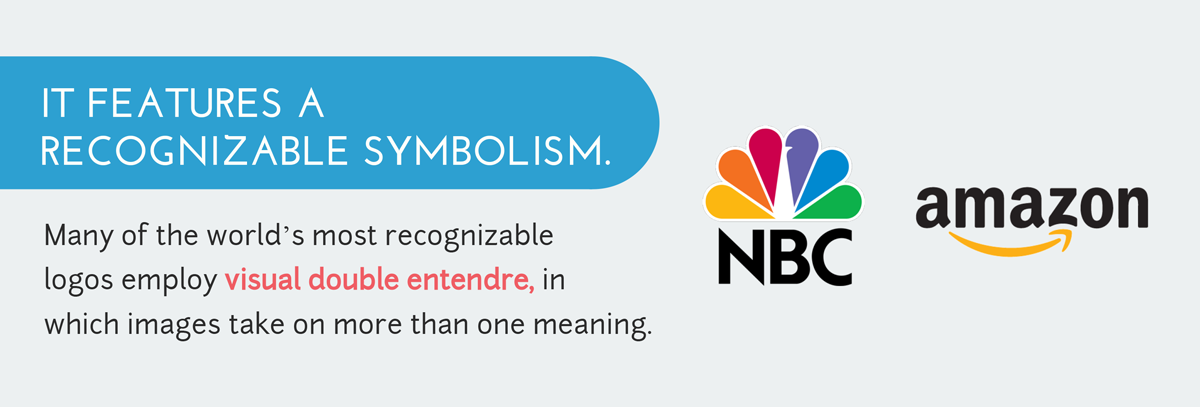
It Features a Recognisable Symbolism
Many of the worlds most recognisable logo designs employ visual double entendre, in which images take on more than one meaning to convey a more powerful message.
Amazon, for example, uses a simple logo that consists of the company’s name. Pretty straightforward, right? But when looking closer, the name is underlined with an arrow, that just happens to point from “a” to “z,” expressing that the retailer offers anything a buyer could want, from A to Z.
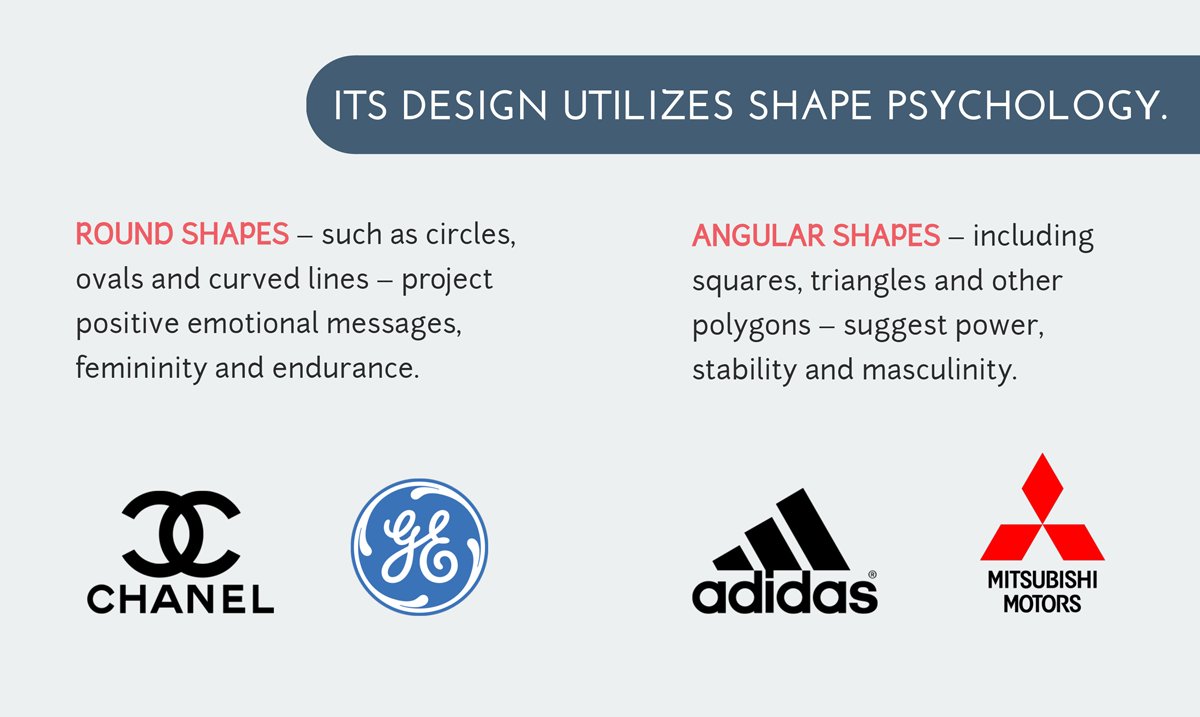
It’s Design Utilises Shape Psychology
- Round Shapes – Such as circles, ovals and curved lines – project positive emotional messages, femininity and endurance.
- Angular Shapes – Including squares, triangles, and other polygons – suggest power. stability and masculinity.
Just as colours can arouse specific emotions within your target audiences, shapes also carry powerful psychological forces. Whether a designer chooses straight lines, circles, curves or jagged edges, each conveys a different meaning.
For example, while round shapes – such as circles, ovals and curved lines – project positive emotional messages, femininity, and endurance, angular shapes – including squares, triangles, and other polygons – suggest power, stability and masculinity.
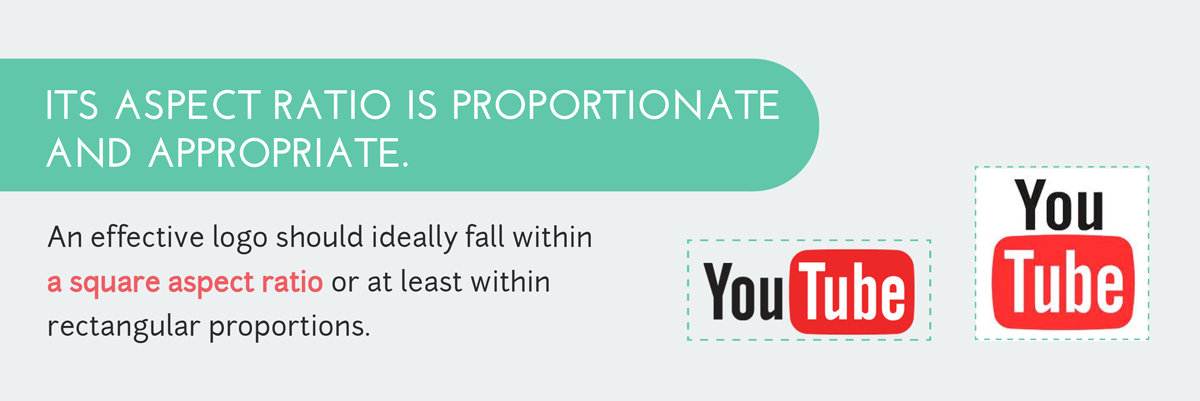
Its Aspect Ratio is Proportionate & Appropriate
An effective logo should ideally fall within a square aspect ratio or at least within rectangular proportions.
In any logo design, the aspect ratio is key. Logos that are too tall and skinny are generally not visually pleasing, same for those too wide and short. Plus, if the design’s width and height aren’t proportionate to each other, the logo can be difficult to use in many layouts and other illustrations. An effective logo should ideally fall within a square aspect ratio (including circles) or at least within rectangular proportions similar to a standard sheet of paper or a business card.
We also have a great detailed article coming soon about The Golden Ratio in Logo Design, So be sure to keep your eyes open for that that.

It’s Instantly Recognisable
The more audiences see a consistent logo, the more they recognise the brand. If it’s changed, the brand recognition can disappear with the original design.
For a logo to be fully effective, it must be recognizable. Studies show that even small children can recognize many brands by their iconic logos. I wrote a nice article about that titled
Brand Awareness From an Early Age
And all of the above elements are key in creating a recognizable design. But it’s also important to realise that many of the world’s most recognisable logos stand apart because their designers bucked tradition and thought outside the box and broke the rules in design.
One element that can definitely hinder recognition is change. Just as with any learning, repetition is key. The more audiences see a consistent logo, the more they recognise the brand. If it’s changed, the brand recognition can disappear with the original design, so once an effective design is determined, companies should think twice before changing it.
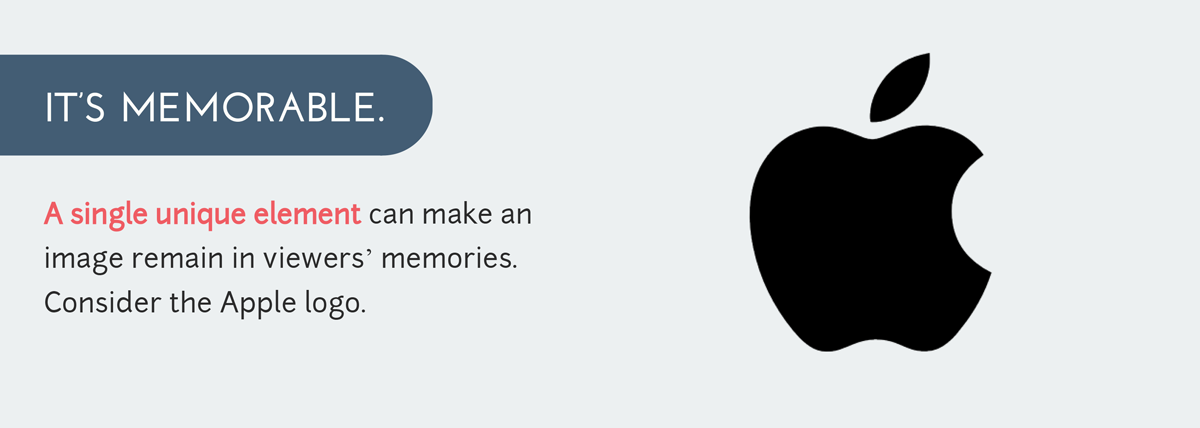
It’s Memorable
A single unique element can make an image in viewers minds memorable. Consider the Apple logo!, the Nike swoosh, the Mcdonalds golden arches, the coca-cola and Kelloggs typeface to name a few.
Just as an effective logo must be recognizable, it must be memorable!. What makes it stand apart so that audiences will remember the design and associate it with a brand?
Oftentimes, a single unique element can make a logo timeless by remaining in a viewers mind making it instantly recognisable. Consider the Apple logo once again. There’s nothing memorable about the silhouette of a fruit. But by removing a bite from the shape, the brand created a logo that is associated with it and it alone. Its a good example of of one of the worlds most iconic and memorable logo designs.
Below is a nice colourful informative infographic to display the information above.

Create beautiful creative and informative Infographics with Visme
Infographic supplied by:
Belle Balace the growth specialist at Visme, a presentation, infographics, and data visualization online maker.
Infographic made with: Visme

